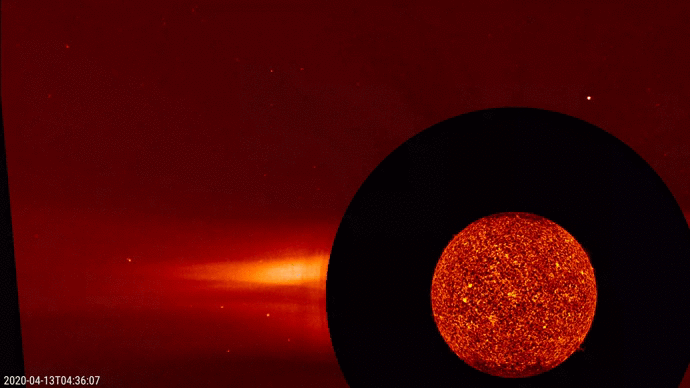The Sun has been spotless since 05 April (SILSO), and solar activity has been very low. Nonetheless, a small eruption took place early on 13 April. This eruption was not located in the usual sunspot belt region (about 30 degrees on each side of the solar equator), but much farther to the north, in fact it bordered the edge of the northern polar coronal hole (see annotated image underneath - movies created with JHV). Most likely, a small (spotless) bipolar region emerged and then reconnected with the existing magnetic field from this polar coronal hole.
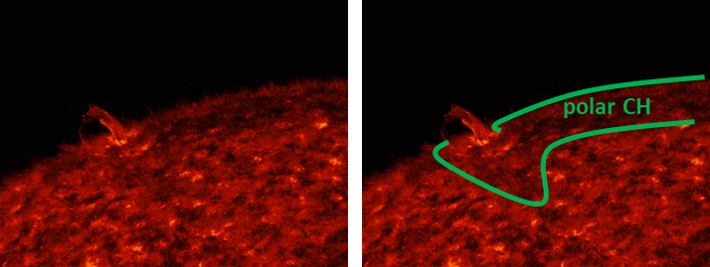
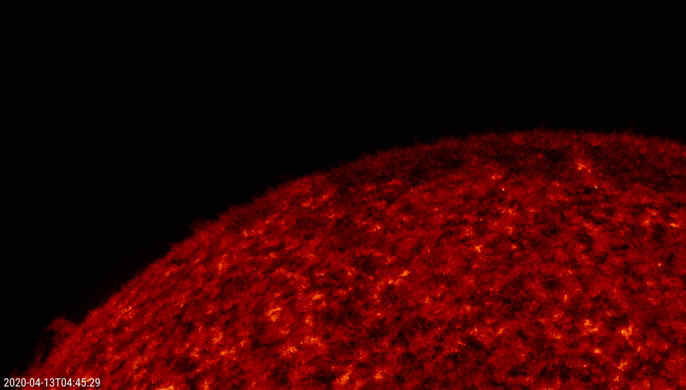
As shown in the extreme ultraviolet (EUV) imagery underneath, the eruption was very compact but also quite violent releasing part of the material into space. A comparison between SDO/AIA 304 (temperatures around 80.000 degrees) and SDO/AIA 171 (temperatures around 700.000 degrees) reveals that the material taking part in the eruption was quite cool. Indeed, in the "hot" AIA 171 filter, the material looks a lot darker ("colder") than in the "cool" AIA 304 filter, where the material is quite bright.
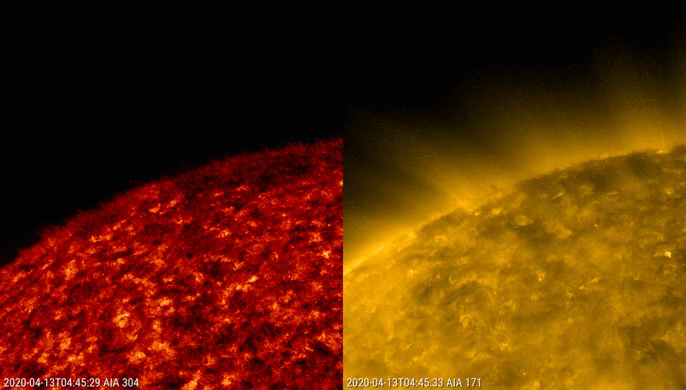
The picture underneath is a combination (one image laid op top of the other) of 2 different EUV filters: SDO/AIA 304, and 193 (green and blue channel only). The entire event didn't last 30 minutes and left no x-ray signature.
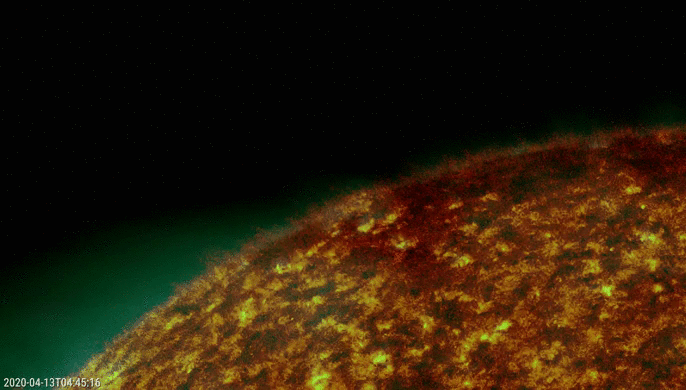
The eruption was associated with a fast and narrow coronal mass ejection (CME). The CACTus tool revealed that the CME was very narrow: only 6 degrees, whereas the average CME width is about 60 degrees. The CME was also very fast, with a speed of at least 1400 km/s (470 km/s is a typical value for a CME). The CME (annotated in the imagery underneath) was not directed to Earth.

